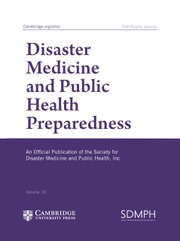Article contents
Investigating Associations Between Climate Change Anxiety and Children’s Mental Health in Pakistan: Impacts and Priority Actions
Published online by Cambridge University Press: 20 November 2024
Abstract
Climate anxiety has a negative impact on the mental health and psychological wellbeing of the vulnerable population. The goal is to assess many factors that affect mental health and psychological wellbeing, as well as how climate change affects mental health in Pakistan’s vulnerable population.
This study provides evidence-based insights on the long- and medium-term impacts of extreme weather events on mental health. To obtain information on these variables, this research uses a quantitative approach and a cross-sectional survey design with a multivariate regression model for empirical tests on a sample of parents and children with an impact on mental health from climate change anxiety.
Results indicate that individuals experience shock and climate change anxiety, and their effects on mental health and psychological wellbeing. Climate change can have detrimental effects on children’s mental health. (1) disaster risk health (2) children’s stress index (3) public health concerns, (4) climate change anxiety, (5) generalized anxiety disorder, and (6) major depression disorder, as reported by the children with mental health outcomes.
The findings of this study show that climate change has a stressful effect on mental health. The paper concludes with a discussion on strategies to address the anticipated mental health issues among children due to climate change.
- Type
- Original Research
- Information
- Copyright
- © The Author(s), 2024. Published by Cambridge University Press on behalf of Society for Disaster Medicine and Public Health, Inc.
Footnotes
This article has been updated since original publication. A notice detailing the change has also been published.
References
A correction has been issued for this article:
- 1
- Cited by
Linked content
Please note a has been issued for this article.


